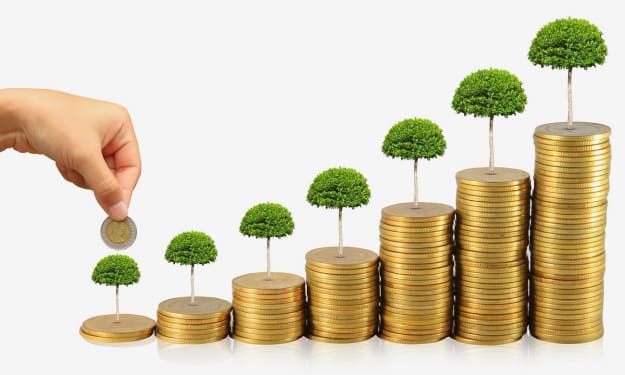Unlocking the Secrets of Fixed Deposits: Is It a Wise Investment?
A Guide to Investing, Pros and Cons

Investing is a crucial aspect of financial planning and it can be quite overwhelming to decide where to invest your hard-earned money. With a plethora of options available, one popular investment choice is fixed deposit (FD).
FDs are a type of investment where you deposit a lump sum amount for a fixed period, and in return, earn a fixed rate of interest. This low-risk investment option is considered by many as a safe and reliable way to grow their wealth.
However, is it really worth investing in fixed deposit? Let's delve deeper into the pros and cons of investing in FDs and understand how to invest in them.
Pros of Investing in Fixed Deposit:
1. Assured Returns: The biggest advantage of investing in FDs is that it offers assured returns. Unlike the stock market, where the returns are subject to market fluctuations, FDs provide a fixed rate of interest, ensuring a steady income for the investor.
2. Low Risk: FDs are considered a low-risk investment option as they are not affected by market volatility. The principal amount invested and the interest earned are both guaranteed, making it a safe choice for risk-averse investors.
3. Flexible Tenure: FDs offer a flexible tenure ranging from a few months to several years, depending on the investor's preference. This allows investors to align their investments with their financial goals and cash flow requirements.
4. Easy to Understand: Investing in FDs is a straightforward process. The interest rates, tenure, and maturity amount are all predetermined, making it easy for investors to understand and plan their investments accordingly.
5. Tax Benefits: FDs offer tax benefits under section 80C of the Income Tax Act, 1961. Investors can claim a deduction of up to Rs. 1.5 lakhs on the amount invested in tax-saving FDs. This makes it a popular investment option for those looking to save on taxes.
Cons of Investing in Fixed Deposit:
1. Low Returns: While FDs offer guaranteed returns, the interest rates are comparatively lower than other investment options such as mutual funds or stocks. This could result in lower returns in the long run, especially when adjusted for inflation.
2. Lock-in Period: FDs have a lock-in period, which means investors cannot withdraw the amount before the maturity date. In case of an emergency, investors may have to pay a penalty to break the FD, resulting in lower returns.
3. Taxation on Interest: The interest earned on FDs is taxable as per the investor's income tax slab. This could significantly reduce the overall returns, especially for individuals falling under higher tax brackets.
4. Fixed Returns: FDs offer a fixed rate of interest, which means the returns do not change even if the market conditions improve. This could result in missed opportunities for higher returns.
How to Invest in Fixed Deposit:
Investing in FDs is a simple process, and it can be done either online or offline. Here are the steps to invest in FDs:
1. Choose the Right Bank or Institution: The first step is to select a reputable bank or financial institution to invest in FDs. It is essential to research the interest rates, ratings, and credibility of the institution before investing.
2. Determine the Tenure: Decide on the tenure of the FD based on your financial goals and cash flow requirements. Short-term FDs offer a lower interest rate, whereas long-term FDs offer higher returns.
3. Calculate the Interest: Use an FD calculator to determine the interest earned, taking into account the principal amount, tenure, and interest rate offered by the bank.
4. Fill the Application Form: Once you have chosen the bank and determined the tenure, fill in the application form and submit it along with the required documents.
5. Choose the Interest Payment Frequency: FDs offer the option of receiving the interest either at regular intervals or at maturity. Choose the frequency that suits your needs.
6. Monitor the FD: Keep track of your FD's maturity date, and if needed, renew the FD for an extended tenure to continue earning interest.
In conclusion, investing in FDs is a suitable option for those looking for a low-risk, fixed-income investment.
However, it is essential to consider the pros and cons before making a decision. It is also advisable to diversify your investment portfolio and not rely solely on FDs for your long-term financial goals.
About the Creator
Enjoyed the story? Support the Creator.
Subscribe for free to receive all their stories in your feed. You could also pledge your support or give them a one-off tip, letting them know you appreciate their work.






Comments
There are no comments for this story
Be the first to respond and start the conversation.